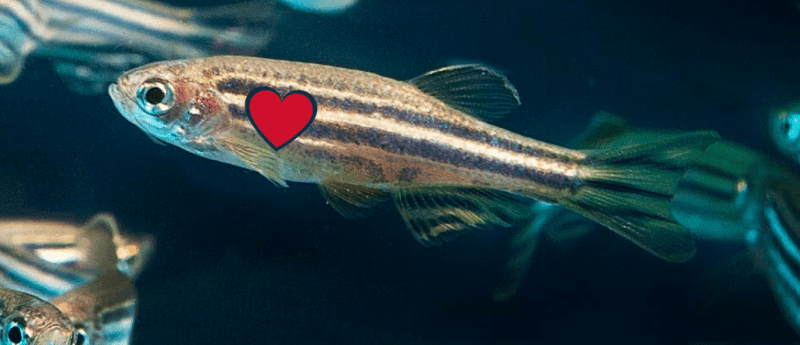Regenerating cardiomyocytes display metabolic reprogramming in zebrafish

A research team from Hubrecht Institute (Utrecht, Netherlands) have found that cardiomyocytes in zebrafish change during heart regeneration.
A team of researchers from Hubrecht Institute (Utrecht, Netherlands) have found that the metabolism of cardiomyocytes change during heart regeneration in zebrafish. These results, published in eLife, raise the potential that glycolysis in heart muscle cells could stimulate regeneration after a heart attack.
Unlike human hearts, the zebrafish heart can regenerate after injury, which has led to the organism becoming a favorite amongst the regenerative medicine community. This study utilized a single-cell RNA sequencing approach to investigate the zebrafishes’ cardiomyocytes, in order to identify what process occurs in the proliferating cells. The team discovered that proliferating border zone cardiomyocytes have very distinct transcriptomes, that resemble embryonic cardiomyocytes, compared to nonproliferating remote cardiomyocytes.
“A striking difference between the border zone heart muscle cells and the other heart muscle cells further away from the injury was that they had completely altered their metabolism,” stated Hessel Honkoop (Hubrecht Institute).
The border zone heart muscle cells at the site of injury displayed a reduced expression of mitochondrial genes and activity, but an increase in glycolysis gene expression and glucose uptake. Therefore, the team investigated the mechanism involved in the change of metabolism. It was found that Nrg1 and ErbB2 signaling induced metabolic reprogramming of border zone cardiomyocytes.
By increasing the activity of Nrg1 and ErbB2 the heart muscle cells were stimulated to divide in zebrafish. The researchers were then shocked to discover the same was true in proliferating mouse cells, even without an injury in the heart.
“We then blocked this metabolic switch in the dividing mouse heart muscle cells that were induced by Nrg1 and ErbB2,” explained Honkoop. “When we saw that this also blocks division in these uninjured mouse heart muscle cells, we realized that the knowledge we were obtaining from the zebrafish is universal to other species.”
Scientists hope that by studying the mechanism of regeneration in zebrafish, we may be able to better understand why the human heart does not regenerate and find ways to stimulate regeneration after injury.
Source: Honkoop H, Bakker D, Kruse A, et al. Single-cell analysis uncovers that metabolic reprogramming by ErbB2 signaling is essential for cardiomyocyte proliferation in the regenerating heart. eLife, 8:e50163 (2019); www.hubrecht.eu/heart-muscle-cells-change-their-energy-source-during-heart-regeneration
Have any additional questions about this story? Ask us in the comments, below.
Find out more in these top picks from the Editor:
- Injected stem cells may not be directly contributing to a healing heart
- New IPSC model for ischemic heart disease
- Performing a gene and cell therapy trial for heart attack patients: an interview with Duncan Stewart